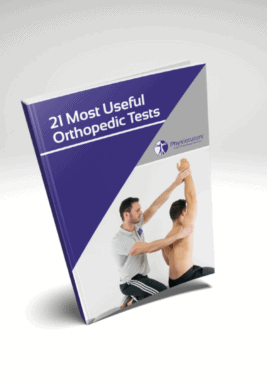Learn
Frozen Shoulder Diagnosis | How to assess Frozen Shoulder
Frozen shoulder has a prevalence of 2%-5.3% in the general population with a peak at 55 years of age and a higher prevalence amongst women patients with diabetes and thyroid dysfunction and a previous episode of Frozen shoulder on the contralateral side. The pathoanatomical features of frozen shoulder are angiogenesis into the capsule tissue which produces collagen fiber proliferation, granulation, and contracture of the capsular ligamentous complex. According to Vastamäki et al. (2012), 94% of the cases resolved within 4-36 months and 15 months on average. However, Wong et al. in (2016) described that complete resolution is unfounded which is why interventions to regain complete shoulder function might be necessary.
The stiff and painful shoulder is identified by a significant and equal loss of both active and passive shoulder movements but has minimal pain on resisted testing. The shoulder can either be stiff due to stiff tissue or due to a stiff joint in case of osteoarthritis, fractures, or rare locked posterior glenohumeral joint dislocations.
To diagnose Frozen shoulder in your physical examination the first examine external rotation in the zero position and compare it to the other side. You can do this by fixating the scapula with your body and the coracoid process on the anterior side with your upper arm.
An external rotation loss of at least 50% compared to the other side or less than 30° is considered a positive finding. Afterward, the range of motion has to be reduced in at least two other planes by at least 25% compared to the other side.
For this reason, it makes sense to test pure range of motion in the glenohumeral joint in abduction and you can do this by fixating the clavicle and scapula followed by the assessment of flexion and again with the fixation of the clavicle and scapula.
According to a study done by Holman et al. (2015), all patients suspected of frozen shoulder displayed some degree of active muscle guarding. For this reason, it might be helpful to perform the coracoid pain test to distinguish between a true and a pseudo frozen shoulder.
Another orthopedic test for Frozen Shoulder is the Shoulder Shrug Sign.
21 OF THE MOST USEFUL ORTHOPAEDIC TESTS IN CLINICAL PRACTICE

References
Like what you’re learning?
BUY THE FULL PHYSIOTUTORS ASSESSMENT BOOK
- 600+ Pages e-Book
- Interactive Content (Direct Video Demonstration, PubMed articles)
- Statistical Values for all Special Tests from the latest research
- Available in 🇬🇧 🇩🇪 🇫🇷 🇪🇸 🇮🇹 🇵🇹 🇹🇷
- And much more!








